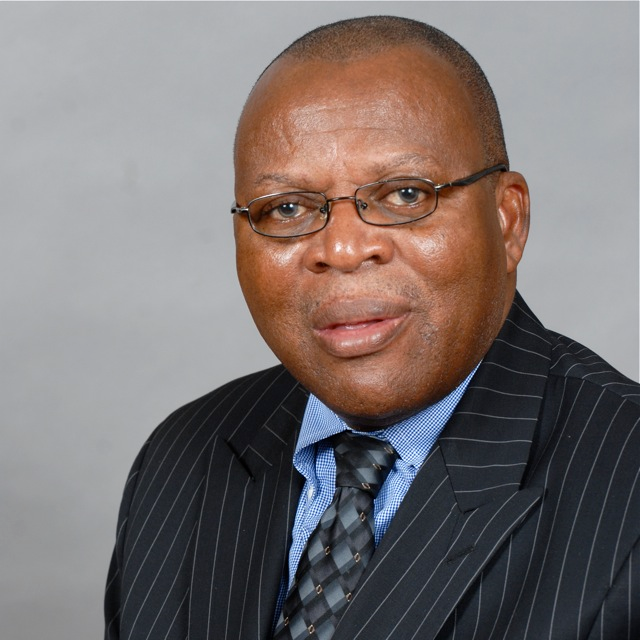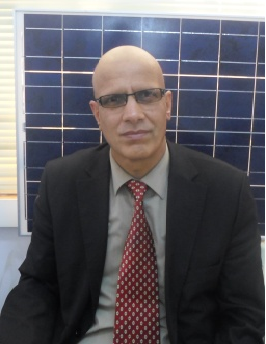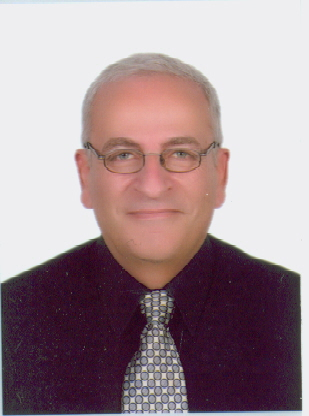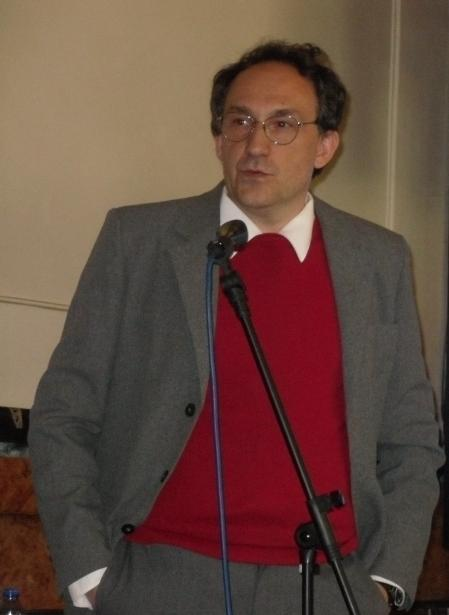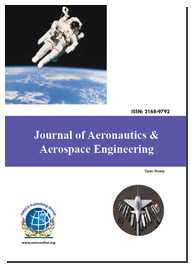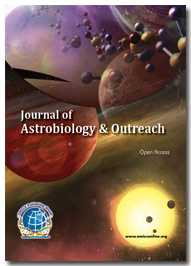Theme: Exploring the limitless potential of satellite technology for creation of better world
Satellite-2015
“International Conference and Exhibition on Satellite” is going to be held during August 17-19, 2015 at Houston, Texas, USA. The special interest and theme of this conference is: “Exploring the limitless potential of satellite technology for creation of better world”. satellite conference gathers renowned Scientists, Professors, CEO’s, Research professionals, Scholars, Engineers, Mechanical, Aerospace, Aerodynamics and Aeronautics, Business delegates, Engineering Students & Ph.D. Students across the globe under a single roof, where they discuss the research, achievements and advancements in the field. It also catalyzes for information exchange and networking between researchers and business entrepreneurs of diverse backgrounds for the advancement of Technology and Research in the field of Satellite communication and Network Engineering.
According to market study, market value of Satellite at present is $8.84 billion. The total space budget of the 35 countries examined in the report represents conservatively USD 64.4 billion in 2009 and an estimated USD 65.3 billion in 2010, with the bulk of funding in G7 and BRIC countries. All G20 countries have space programmes. Five countries have invested more than USD 2 billion in 2010 (United States, China, Japan, France and the Russian Federation), with the United States leading the way at more than USD 43 billion. According to market study, market value of Satellite at present is $8.84 billion. The total space budget of the 35 countries examined in the report represents conservatively USD 64.4 billion in 2009 and an estimated USD 65.3 billion in 2010, with the bulk of funding in G7 and BRIC countries. All G20 countries have space programmes. Five countries have invested more than USD 2 billion in 2010 (United States, China, Japan, France and the Russian Federation), with the United States leading the way at more than USD 43 billion.
The targeted audiences for Satellite are Directors, Heads, Deans, Professors, Scientists, Researchers, Aerospace and Mechanical Department, Founders and Employees of the related companies, Associations, organizations, laboratories members and Students related to Mechanical, Aerospace, Aerodynamics and Aeronautics Departments.
The Gillard Government will invest $375.4 million over twelve years to deliver free-to-air digital TV services from the new Viewer Access Satellite Television (VAST) satellite platform. In July 11, 2013 - India's space agency ISRO (Indian Space Research Organization) spent a mere $75 million to launch a small spacecraft bound for Mars, 140 million miles away. With the other four countries' missions which cost billions of dollars. The economy, employing so many while also funding development. Number of university having Aerospace and Aeronautical Engineering, Aerospace and Mechanical Engineering, Electronics and Computer science Engineering, Department of Earth and space sciences, Department of Physics & Astronomy, Computer Science and Mathematics, Civil & Environmental Engineering and Department of Astrophysical and planetary sciences department-95%. Number of Research institutes working on Satellite – 75%.
Importance & Scope:
Satellite Conference 2015 aims to bring together leading academic Scientists, Researchers, professors, Engineers, Mechanical, Aerospace, Aerodynamics and Aeronautics, Business delegates, talented student communities and research scholars to exchange and share their experiences and research results about all aspects of Satellite and Network engineering conferences. Satellite communication conferences provides a chance to active researchers to explain the recent progress, trends, advancements in the field of Satellite and network engineering and the solutions they came up with practical problems faced during the phases of research in the field of satellite and applications. Satellite Technology Events are an international platform aims to gather results from academia and industry partners working in all subfields of satellite. We try to bring people from different fields, and to create a setting in which they can interact synergistically, and hopefully create new scientific results.
Why Houston?
Houston is one of the best cities to organize an international conference on Satellite. The research work going on in the field is in a good range when compared to the other cities. Houston is the fastest growing city in the United States (total population) with an excellent economic growth. Many Colleges affiliated to the University of Houston satellite campuses offers technology degree programs. Houston’s economy has a broad industrial base in energy, manufacturing, aeronautics, and transportation. It is also leading in health care sectors and building oil field equipment; only New York City is home to more Fortune 500 headquarters. The Port of Houston ranks first in the USA in international waterborne tonnage handled and second in total cargo tonnage handled. Satellite conferences at Houston will certainly give a wonderful experience to attendees to explore the beautiful city with gaining knowledge.
International Conference and Exhibition on Satellite, commencing from August 17-19, 2015 in Houston, Texas, USA is the most important opportunity in for meeting various research people in areas such as satellite, fiber, broadband, wireless and Space Missions, Satellite Navigational Systems for government, military, broadcasters, telecommunications, enterprise firms, IP Networking, mobile communications and emergency response applications. This conference will be an excellent platform for interdisciplinary interactions, to exchange and share knowledge under a single roof. The Organizing Committee Members are accelerating the satellite conference with innovative and informative programs which includes plenary talks, workshop, poster presentation, symposia on various topics and wide range of programs for participants from all over the world. We cordially invite you to join us at the Satellite conferences, and strongly assure the attendees feel it as an excellent opportunity to meet industry experts and learn about the latest technologies. All members of the Satellite-2015 organizing committee look forward to meet you in Houston, USA.
Why to attend???
International Conference and exhibition on Satellite is organizing an outstanding Scientific Exhibition/Program and anticipates the world's leading specialists involved in Satellite and Network Engineering. Your organization will benefit with excellent exposure to the leaders in Satellite and Network Engineering. You can update your knowledge about current situation of Satellite and receive name recognition at this 3-day event. Satellite-2015 is an exciting opportunity to showcase the new technology. World-renowned speakers, the most recent techniques, tactics, and the newest updates in Satellite and Network Engineering fields are hallmarks of this conference.
Members Associated with Satellite Research
Members associated with Satellite research are Scientists, Researchers, professors, Engineers, Mechanical, Aerospace, Aerodynamics and Aeronautics, Business delegates, research scholars, and Young researchers and student delegates from Academia and Research along with the industrial professionals from Engineering sectors.
Academia 60%
Industry 30%
Others 10%

Statistical Analysis of Members Associated with Satellite

Statistics of Researchers, Academicians and Industrial Professionals working on Satellite:

Societies Associated with Satellite Research
Major Satellite Associations in USA
· Aerospace Industries Association of America, Inc.
· Alliance for Telecommunications Industry Solutions
· American Astronautical Society
· American Institute of Aeronautics and Astronautics
· American Society for Photogrammetry and Remote Sensing
· Mobile Satellite Users Association
· National Association of Broadcasters
· National Cable & Telecommunication Association
· National Ocean Industries Association
· National Rural Telecommunications Cooperative (NRTC)
· National Space Society
· Pacific Telecommunications Council
· Satellite Broadcasting & Communications Association
· Satellite Industry Association (SIA)
· SCTE — Society of Cable Telecommunications Engineers
· Society of Satellite Professionals International (SSPI)
· Telecommunications Industry Association (TIA)
· U.S. Space Foundation
· Washington Space Business Roundtable (WSBR)
· World Teleport Association
Major Satellite Associations around the Globe
· The Satellite Industry Association (SIA)
· Mobile Satellite Users Association
· Teleport Operators
· Space Data Association
· SIA Industry Association
· The European Satellite operators Association
· Space REF
· Space Data Association, NASA Agreement to Forward Satellite Safety
· Micro space communication corporation
· The British Association of Remote Sensing companies
· GLOBECOMM
· International Mobile Satellite Organization
· Committee on Space Research (COSPAR)
· European Broadcasting Union
· European Satellite Operators Association
· Global VSAT Forum
· International Astronautical Federation
· Armed Forces Communications & Electronics Association (AFCEA)
· The Asia-Pacific Satellite Communications Council (APSCC)
· Cable and Satellite Broadcasting Association of Asia (CASBAA)
· Prospace
Statistical Analysis of Associations

Statistical Analysis of Companies

Revenue Generated by Industries:
According to market study, Market value of Satellite research would be increased by 22% in 2015 and in Houston and for the Space missions Market the growth rate was increased by 41.6% in 2015 and the rest in world wide.
Revenue Generated by Industries

Investment on Satellite:
Space X confirmed that it had received $1 billion in funding from Google and Fidelity Investments. Based on this, we can expect that the investment on satellite and space research would be increased approximately $450 million around the world.
According to market study, the Virgin and Qualcomm announced that they will be leading investments in One Web Ltd, a satellite internet company founded by Greg Wyler, the founder of satellite internet company O3b Networks. One Web aims to build and launch a satellite constellation to provide internet directly to users.
Investment on Satellite

Universities Associated with Satellite Research
Top Universities in USA:
· Massachusetts Institute of Technology (MIT)
· Stanford University
· University of California, Berkeley
· California Institute of Technology (Caltech)
· Princeton University
· University of California, Los Angeles (UCLA)
· Georgia Institute of Technology (Georgia Tech)
· Carnegie Mellon University
· University of Texas at Austin
· Rice University
· Texas A&M University
· University of Delaware
· University of California, Riverside
· Arizona State University
· University of Michigan
· Michigan State University
· Ohio University
· Colorado State University
· Harvard University
Top Universities in Worldwide:
· DeVry University
· University of Cambridge
· University of Oxford
· Imperial College London
· University of Toronto Mississauga
· Case Western Reserve Engineering
· New Jersey Institute of Technology
· ETH Zürich – Swiss Federal Institute of Technology Zürich
· Imperial College London
· National University of Singapore (NUS)
· Northwestern University
· Hong Kong University of Science and Technology
· Cornell University
Statistical Analysis of Universities

Universities Grants allotted for Satellite Research

Market Value on Satellite Research:
According to market study, market value of Satellite at present is $8.84 billion. The total space budget of the 35 countries examined in the report represents conservatively USD 64.4 billion in 2009 and an estimated USD 65.3 billion in 2010, with the bulk of funding in G7 and BRIC countries. All G20 countries have space programmes. Five countries have invested more than USD 2 billion in 2010 (United States, China, Japan, France and the Russian Federation), with the United States leading the way at more than USD 43 billion.
Statistical Analysis of Market Value

Growth by next 5-10 years in Worldwide:
The global market for Satellite research is expected to show a steady growth during the forecasted period resulting into a multi-billion dollar market. Five years down the line, Asia is expected to be a market leader followed by North America because of the growing purchasing power of the population and their shift towards Satellite and Space missions.
Conditional Access Systems Market Expected to Reach US$ 6.89 Billion by 2022
New York, NY, July 7, 2015--According to a new market report published by Transparency Market Research entitled "Conditional Access Systems Market - Global Industry Analysis, Size, Share, Growth, Trends and Forecast, 2015 - 2022," the global conditional access systems market was valued at US$ 2.09 Billion in 2014 and is estimated to reach US$ 4.72 Billion by 2022, growing at a CAGR of 10.3% from 2015 to 2022.
Asia-Pacific OTT Forecasts
London, UK, July 2, 2015--Digital TV Research forecasts 68.83 million SVOD [subscription video on demand] homes in the Asia-Pacific by 2020 quadruple the 2014 total and up from only 1.47 million in 2010. Japan will remain the largest SVOD country. China will overtake South Korea to become the second largest country by SVOD homes in 2020. From the 51.63 million SVOD home additions between 2014 and 2020, will supply 11.84 million, 12.55 million and 7.21 million.
Washington, D.C., May 19, 2014 (SIA PR) — The Satellite Industry Association (SIA) today released its 2014 State of the Satellite Industry Report, showing a three percent growth rate in world satellite industry revenues in 2013. Globally, 2013 revenues for the satellite industry totaled $195.2 billion, up from $188.8 billion the previous year. Overall industry growth was led by the satellite services segment, the traditional driver for the industry, which saw its revenues increased by almost $7 billion. Satellite manufacturing also saw significant growth, with 2013 revenues coming in eight percent higher than the year prior. Satellite ground equipment revenues saw modest growth, while satellite launch revenues decreased
Statistical Analysis of Growth by next 5-10 years

Fund Allotment to Satellite Research in world:
According to market study, market value of Satellite at present is $8.84 billion. The total space budget of the 35 countries examined in the report represents conservatively USD 64.4 billion in 2009 and an estimated USD 65.3 billion in 2010, with the bulk of funding in G7 and BRIC countries. All G20 countries have space programmes. Five countries have invested more than USD 2 billion in 2010 (United States, China, Japan, France and the Russian Federation), with the United States leading the way at more than USD 43 billion.
Virgin Group and Qualcomm are leading investment in a company aiming to build a network of satellites to extend mobile coverage around the world. Some of the satellites will be launched by Virgin Galactic, the group’s division that plans to offer commercial sub-orbital flights but which is also developing a delivery service for satellites called Launcher One. Reuters said the satellite network will cost between $1.5 billion and $2 billion. They will be positioned to orbit the earth at an altitude of around 750 miles.

OMICS International proudly invites contributors across the globe to International Conference and Exhibition on Satellite (Satellite-2015) going to be held during August 17-19,2015 Houston, Texas, USA. The aim of Satellite 2015 is to bring together leading academic Scientists, Researchers, Professors, Engineers, Mechanical, Aerospace, Aerodynamics and Aeronautics, Business delegates, Talented student communities and research scholars to exchange and share their experiences and research results about all aspects of Satellite and Network engineering conferences.
Satellite conference provides a chance to active researchers to explain the recent progress, trends, advancements in the field of Satellite and network engineering and the solutions they came up with practical problems faced during the phases of research in the field of satellite and applications. Satellite Technology Events are an international platform aims to gather results from academia and industry partners working in all subfields of satellite. We try to bring people from different fields, and to create a setting in which they can interact synergistically, and hopefully create new scientific results.
Satellite-2015 revolves around the theme: Exploring the limitless potential of satellite technology for creation of better world. The conference throws light on thought provoking topics and recent research in the field of Satellite like Satellite Subsystems, Space Missions, Military and Non-Military Satellite Technology, New Satellite Technologies for Cleaner Low Orbits, Satellite Internet Access, and Internet Protocol Networking over Satellite & Applications, Applications of Satellite Technology, Satellite Challenges and Solutions, Integral Manoeuvres for the Future. The Organizing Committee Members accelerating the satellite conference with innovative and informative programs which includes plenary talks, workshop, poster presentation, symposia on various topics and wide range of programs for participants from all over the world. Satellite conference series cordially invite you to join us at the auspicious event, we strongly assure attendees an excellent opportunity to meet industry experts and learn about the latest technologies in the field of satellite and network engineering. We look forward to meeting you in Houston, USA.
Satellite Engineering & Technology:
Satellite Engineering and Technology focusing on communications between earth communication stations and space-based communication satellites. The discipline involves designing Communication satellites, Space Missions, Space Applications, Space Propulsion, designing and building earth stations, Satellite Launcher Technology, repairing and installing satellite communication equipment. Have evolved from satellite. Aerospace Engineering deals with the design, construction, and study of the science behind the forces and physical properties of aircraft, rockets, flying craft, and spacecraft. The field also covers their aerodynamic characteristics and behaviors, airfoil, control surfaces, lift, drag, and other properties. Aerospace Engineering is divided into two major and overlapping branches i.e. Aeronautical Engineering and Astronautical Engineering. Aeronautics deals with aircraft that operate in Earth's atmosphere, and Astronautics deals with spacecraft that operate outside the Earth's atmosphere.
Satellite Navigational Systems:
Satellite Navigation is a system of satellites that provide autonomous geo-spatial positioning with global coverage. It allows small electronic receivers to determine their location (longitude, latitude, and altitude) to high precision (within a few meters) using time signals transmitted along a line of sight by radio from satellites. The signals also allow the electronic receivers to calculate the current local time to high precision, which allows time synchronization. A Satellite Navigation system with global coverage may be termed a global navigation satellite system (GNSS). Satellite navigation systems that provide enhanced accuracy and integrity monitoring usable for civil navigation as well as Core Satellite navigation systems are currently GPS (United States), GLONASS (Russian Federation), Galileo (European Union) and Compass (China).
Types of Satellites & Applications:
Satellites can be classified by their function since they are launched into space to do a specific job. The satellite must be designed specifically to fulfill its role. There are nine different types of satellites i.e. Communications Satellite, Remote Sensing Satellite, Navigation Satellite, LEO, MEO, HEO, GPS, GEOs, Drone Satellite, Ground Satellite, Polar Satellite. Communications satellites are artificial satellites that relay receive signals from an earth station and then retransmit the signal to other earth stations. They commonly move in a geostationary orbit. A remote sensing instrument collects information about an object.
Satellites are used for a large number of purposes. Common types include military and civilian Earth observation satellites, communications satellites, navigation satellites, weather satellites, and research satellites. Space stations and human spacecraft in orbit are also satellites. Satellite orbits vary greatly, depending on the purpose of the satellite, and are classified in a number of ways. Well-known (overlapping) classes include low Earth orbit, polar orbit, and geostationary orbit.
Satellite Communication Subsystems that are required on a spacecraft with details of Telemetry, Tracking and Command System. TTC&M refers to Telemetry Monitoring and Command subsystem. These subsystems are established on the earth. The telemetry and command subsystem provides us the information about the happenings going on with the satellites on the space.
Space Missions are currently spacecraft exploring Mercury, Venus, Mars, and Saturn, as well as a comet and an asteroid. The Voyager spacecraft are hurtling out of our solar system, while New Horizons speeds toward a 2015 encounter with Pluto. Closer to home, we have probes in lunar orbit, a handful of solar physics missions, space telescopes, and a small army of Earth-observing satellites. In Earth orbit, the International Space Station continues to soar around the planet with a continually staffed crew of astronauts and cosmonauts.
Military and Non-Military Satellite Technology:
Military satellite is an artificial satellite used for a military purpose. The most common missions are intelligence gathering, navigation and military communications. The first military satellites were photographic reconnaissance missions. Some attempts were made to develop satellite based weapons but this work was halted in 1967 following the ratification of international treaties banning the deployment of weapons of mass destruction in orbit. As of 2013, there are 950 satellites of all types in Earth orbit. It is not possible to identify the exact number of these that are military satellites partly due to secrecy and partly due to dual purpose missions such as GPS satellites that serve both civilian and military purposes.
New Satellite Technologies For Cleaner Low Orbits:
Space debris is also known as orbital debris which is the collection of defunct objects in orbit around Earth. This includes spent rocket stages, old satellites and fragments from disintegration, erosion and collisions. Since orbits overlap with new spacecraft, debris may collide with operational spacecraft. There are more than 12000 track able items of space debris larger than 10 cm orbiting Earth, including derelict satellites, spent upper stages and fragments of old missions – all presenting a clear and present danger to current missions. Mitigation requirements also ban space systems from undergoing uncontrolled re-entry if the associated ground casualty expectancy exceeds 0.0001 per event. For such cases a controlled re-entry over unpopulated areas is mandated instead.
Satellite Internet access is provided through communications satellites. Modern satellite Internet service is typically provided to users through geostationary satellites that can offer high data speeds, with newer satellites using Ka band to achieve downstream data speeds up to 50 Mbps. Satellite main challenge is Signal latency. The Latency is the delay between requesting data and the receipt of a response, or in the case of one-way communication, between the actual moment of a signal's broadcast and the time it is received at its destination. The amount of latency depends on the distance travelled and the speed of light. The mobile web refers to access to the world wide web, i.e. the use of browser-based Internet services, from a handheld mobile device, such as a smartphone or a feature phone, connected to a mobile network or other wireless network.
Internet Protocol Networking Over Satellite & Applications:
The Internet relies on the Transmission Control Protocol (TCP) to ensure packet delivery without errors. This allows TCP to achieve the fastest practical data transfer rate for the conditions present on the network. As a result, TCP moves out of slow-start mode quickly and builds to the highest practical speed. To prevent packets from being acknowledged twice, the spoofing equipment suppresses acknowledgments from the remote site. UDP - The UDP protocol cannot be accelerated because it is not a connection-based protocol. NetBIOS - This is a LAN technology that cannot be accelerated as it is not designed to function in a WAN environment.RDP (Citrix) and RCP (Exchange) can also be slow over a satellite connection.
Applications of Satellite Technology:
The main applications of satellites are mainly categorized as, Weather forecast used to observations from which to analyses the current state of the atmosphere. Broadcasting services include radio and television delivered directly to the consumer and mobile broadcasting services. Earth observation satellites are used for observing the earth's surface, possible to see many features that are not obvious from the earth's surface, or even at the altitudes at which aircraft fly. The Global Positioning System (GPS) is the first core element of the satellite navigation system widely available to civilian users. During natural disasters and emergencies, when land-based communication services are down, mobile satellite equipment can be deployed to disaster areas to provide emergency communication services such as search and rescue operations. Remote sensing satellites might track animal migration, locate mineral deposits, watch agricultural crops for weather damage, or see how fast the forests are being cut down.
Satellite Challenges and Solutions:
Satellite Challenges and Solutions are line of sight, it must clear an object by at least the radius of the dish being used. But sometimes it is failed due to uncomfortable situations in the climate. Reliable GPS positioning in city environment is a key issue: actually, signals are prone to multipath, and satellite geometry, despite its improvement with GNSS interoperability, remains poor in many streets. Non-Line-Of-Sight (NLOS) satellites cause important receiver-satellite range measuring errors, because the direct signal is blocked and only the reflected signal is tracked. One of the challenges of satellite communications is latency - delays caused by distance and switching. While this hardly matters with web surfing or broadcasts, it does become significant where fast interaction is required between users. Transmission delay is a function of the packet's length and has nothing to do with the distance between the two nodes. This delay is proportional to the packet's length in bits.
Integral Manoeuvres for the Future:
Global online bandwidth forecasts and impact of high definition TV on satellite bandwidth demand. Commercialization of space, new satellite technologies and capacity forecasts. Future of geosynchronous satellites and low orbit satellites. "It is always difficult to see exactly where future satellite technology will go, but imagine it will progress in a similar way to that of PC technology - basically satellites individually doing more dedicated tasks and then networking together to provide an overall greater capability. This will make individual nodes more focused and more cost effective. We may even see clusters of satellites in the future". Future large satellites in Earth orbit may be assembled in space, so one of the major challenges for future satellite technology we can see is using robotics for small satellites to construct larger ones. Robotics is also an area of development for inter-planetary satellites
Vibration Design and Satellite Remote Sensing:
In a more restricted sense, remote sensing usually refers to the technology of acquiring information about the earth's surface (land and ocean) and atmosphere using sensors onboard airborne (aircraft, balloons) or space borne (satellites, space shuttles) platforms. A remote sensing instrument collects information about an object or phenomenon within the instantaneous-field -of-view (IFOV) of the sensor system without being in direct physical contact with it. The sensor is located on a suborbital or satellite platform.
Conference Highlights
- Satellite Engineering and Technology
- Satellite Navigational Systems
- Types of Satellites and Applications
- Satellite Subsystems
- Space Missions
- Military and Non-Military Satellite Technology
- New Satellite Technologies For Cleaner Low Orbits
- Satellite Internet Access
- Internet Protocol Networking Over Satellite and Applications
- Applications of Satellite Technology
- Satellite Challenges and Solutions
- Integral Manoeuvres for the Future
- Vibration Design and Satellite Remote Sensing
To share your views and research, please click here to register for the Conference.
To Collaborate Scientific Professionals around the World
| Conference Date | August 17-19, 2015 | ||
| Sponsors & Exhibitors |
|
||
| Speaker Opportunity Closed | Day 1 | Day 2 | Day 3 |
| Poster Opportunity Closed | Click Here to View | ||
Useful Links
Special Issues
All accepted abstracts will be published in respective Our International Journals.
- Journal of Aeronautics & Aerospace Engineering
- Journal of Astrobiology & Outreach
- Journal of Astrophysics & Aerospace Technology
Abstracts will be provided with Digital Object Identifier by







